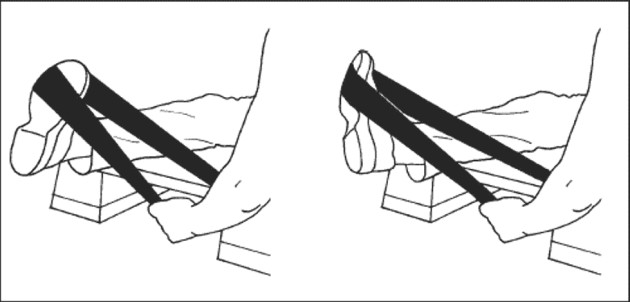
Ankle exercises
Ankle instability can be caused by either mechanical instability or functional instability, or may be a combination of both.
Mechanical instability means that there is a problem with a structure in the ankle joint thus the congruence of the joint is not ideal and the joint can be unstable as a consequence. One cause of mechanical instability is looseness of the ligaments that hold the joint together.
Functional instability describes a situation where there is no structural problem with the ankle joint, but the joint still feels unstable in certain circumstances, it is this kind of instability that can be effectively treated with exercise.
Traditionally ankle exercises for weak or functionally unstable ankles centered around proprioceptive exercises. Proprioception describes a feedback loop whereby the ligaments and muscles surrounding a joint feedback information to the brain about the position a joint is in and the brain activates or relaxes muscles to alter the joint’s position accordingly. Clearly this feedback mechanism needs to be able to happen in a fraction of a second in order to prevent injury. For instance if running and the foot goes down onto the edge of a small unseen stone the brain needs to quickly activate muscles to prevent the ankle from spraining.
Whilst proprioceptive exercises still have a role to play in the rehabilitation of an unstable ankle it is now recognised that the ankle exercise programme should be much broader than that.
The ankle is what is known as a mortice joint, so in certain positions the bones are lined up close together and therefore the joint is naturally more stable. The stable position for the ankle is with the foot pulled up; the unstable position is with the toes pointed down. If anything limits the ankle from getting into its stable position, for instance if the calf muscles are tight then the ankle will be more unstable.
Equally muscle issues are frequently found higher up the leg which affect the movement and position at the foot. Muscles which are commonly implicated include a muscle deep in the buttock, one on the inside of the thigh and one which pulls the big toe downwards.
Read more news from our Physiotheraphy section.
Check out our Interviews section, every Tuesday a new story, tomorrow read about Artur Popko – “Final was filled with emotions”